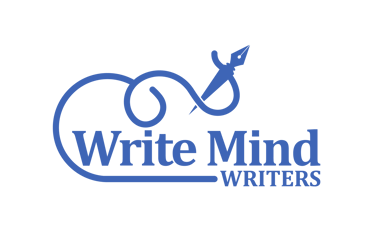*This article was first published on TNT Project Consulting Services (parent company) blog page.
After furiously searching the internet, job boards, and hitting up all of your contacts, you've found the perfect job. This position is just what you're looking for. Now, how do you get in the door? Remember, the resume's main job is to get you the interview (even better, it should convince the hiring manager that you are the best candidate for the job).
You need to dust off that old resume, but what about those new modern-style resumes that everyone is posting on social media, with profile pictures, and fancy charts and graphs? They look nice, but should you go that route?
This article will explain how to get past the bots so that your resume actually gets into the hands of the hiring manager. You will also learn about resume formatting, what to include, what not to include, and how to transition to a modern-style resume.
Should I use ChatGPT or (other AI tool) to write my resume?
Absolutely not! Can you use it as an aid to generate ideas? Definitely! ChatGPT and similar AI tools are great resources that will perform much of the research for us. However, when writing a resume, you need your accomplishments to stand out. You need real data to demonstrate what you have accomplished in the past, the challenges you have overcome, and how these relate to your success in the next role. By connecting with a professional resume writer, they will help you build your skills and accomplishments so that they stand out and attract your dream job.
By applying the tips in this article, you will create a dynamic resume that will get you the interview.
Get Past the Bots
Before your resume ever gets into the hands of an HR recruiter or a hiring manager, it often has to go through an ATS or Applicant Tracking System such as iCIMS or Kronos. According to Jobscan, 98% of Fortune 500 companies now use an ATS, making the resume's role even more significant. It first has to beat the system. These systems are designed to dissect a resume and grade it for the position under consideration. If your resume does not rank well, the hiring manager may never even see it.
Secondly, if your resume is overly formatted, it may not read well once parsed by the ATS. Newer ATS systems are beginning to work past complex formatting, but many still are unable to render the charts, graphs, and bubbles highlighting your strengths. These will likely appear as gibberish and be unintelligible to the ATS. To make sure that these necessary statistics are read properly, repeat them within the body of the resume.
To ensure all points on your resume are clearly visible and graded effectively, use clean, consistent formatting. Submit only PDF documents (or TXT) and tailor each resume to the specific job position. If the job posting asks for an expert in JavaScript with experience working in the financial industry, place the keywords "JavaScript" and "finance industry" in relevant places on your resume.
In summary, here are 3 points to help you get past the bots:
Simply formatting; any information in charts and graphs should also be placed in the text portion of your resume
Submit a PDF or TXT doc
Tailor your resume to the job by using keywords found in the job description
Resume Format
There are several items to consider when determining the format of your resume. Should the resume be one page? The answer to the following questions will have an impact on the formatting of your resume:
Are you entry-level, fresh out of college, or a professional with many years of industry experience?
Have you been a job-hopper, having only remained on several different jobs for 8 months or less each?
Resume Length
Gone are the days when one-page resumes were the rule. If you are truly an experienced professional in your field, your resume should be a full two pages. Only those fresh out of college should abide by the one-page resume rule. It is still important that a recruiter or hiring manager be able to clearly identify your strengths within 30 seconds of scanning your resume, whether it is one page or three. The key to ensuring that this happens is by making keywords stand out, creating bulleted lists of your achievements, and crafting a well-worded summary.
Include as much of your last 10 years of experience as is relevant to your desired position. There is no need to omit any of your past jobs for the sake of saving real estate, even if there are gaps in your employment.
Job Gaps
So how do you handle gaps in employment? Prior to COVID-19, discussing job-hopping was a bit trickier. However, many businesses closed their doors or significantly downsized their staff during the pandemic, making job gaps easier to explain.
Point out job transitions on your resume. If you moved or had a baby, or simply got laid off, create a section to explain the gap in employment. Describe schooling or any other education you were taking part in during the transition, even if it was online. This will help to take the focus away from the employment gap and place emphasis on your productivity during the transition.
Depending on your background and the number of jobs held, it may be advisable to use a format that focuses on skills and accomplishments, not on the employment dates. You still need to include the employment dates; omitting them will quickly raise red flags. Excluding the months has become more acceptable over the past couple of years. If you worked more than one job at a time, and one job had a very short tenure, consider not even including it if it does not provide relevant experience for the job you seek.
Although cover letters get a bad rap, they can be the best complement to a resume that screams job-hopper. Explain that you are looking forward to an environment where you can commit long-term. Avoid speaking negatively about your previous roles; instead, explain how you hit your ceiling in previous roles and are looking for an environment where you can grow and hone specific skills.
In summary, here are three points to help with resume format:
Resumes should be two full pages for experienced professionals; shorter resumes are for entry-level candidates
Experienced candidates should use multiple pages to convey experience and qualifications
Explain job transitions and gaps in employment; endeavor to add details showing productivity during the gap.
The Key Ingredient






